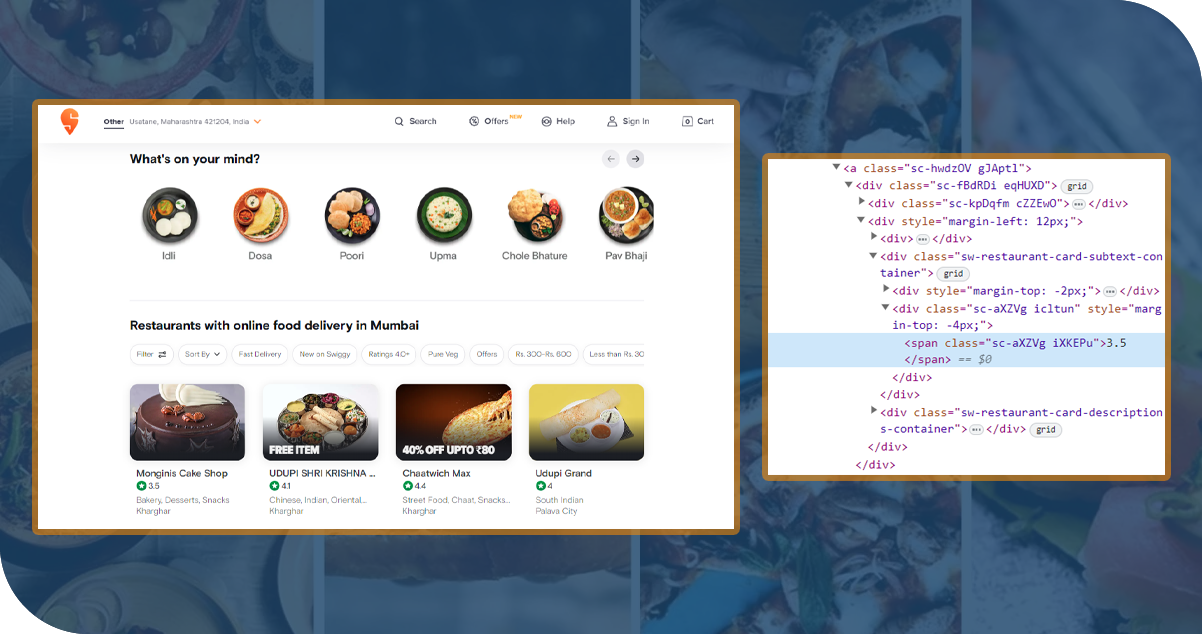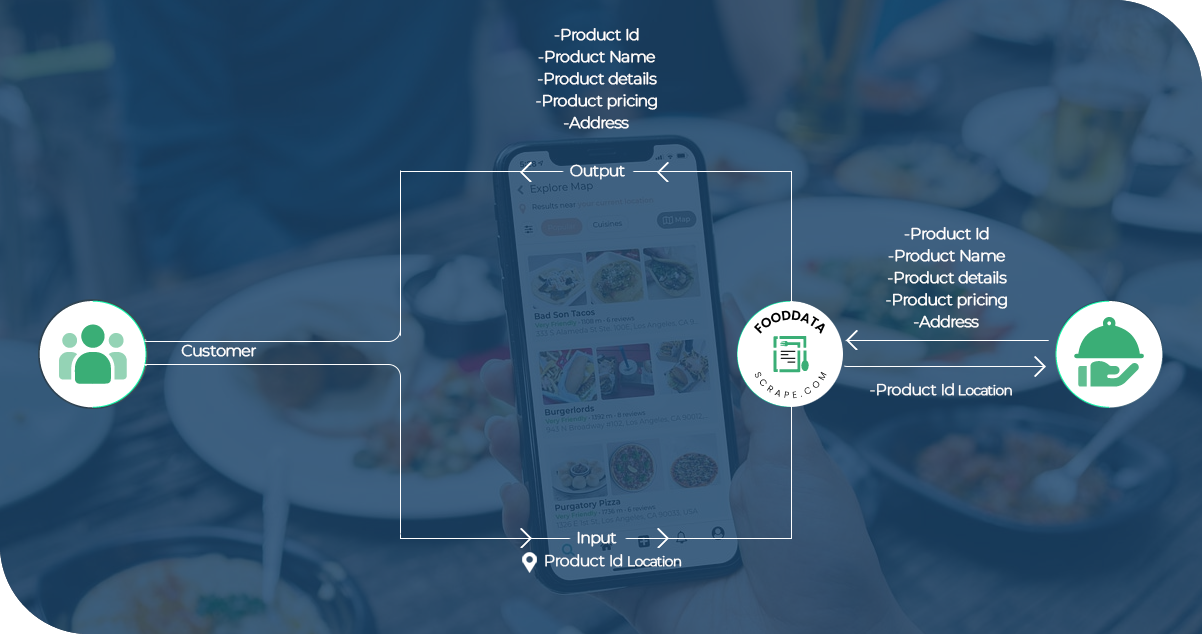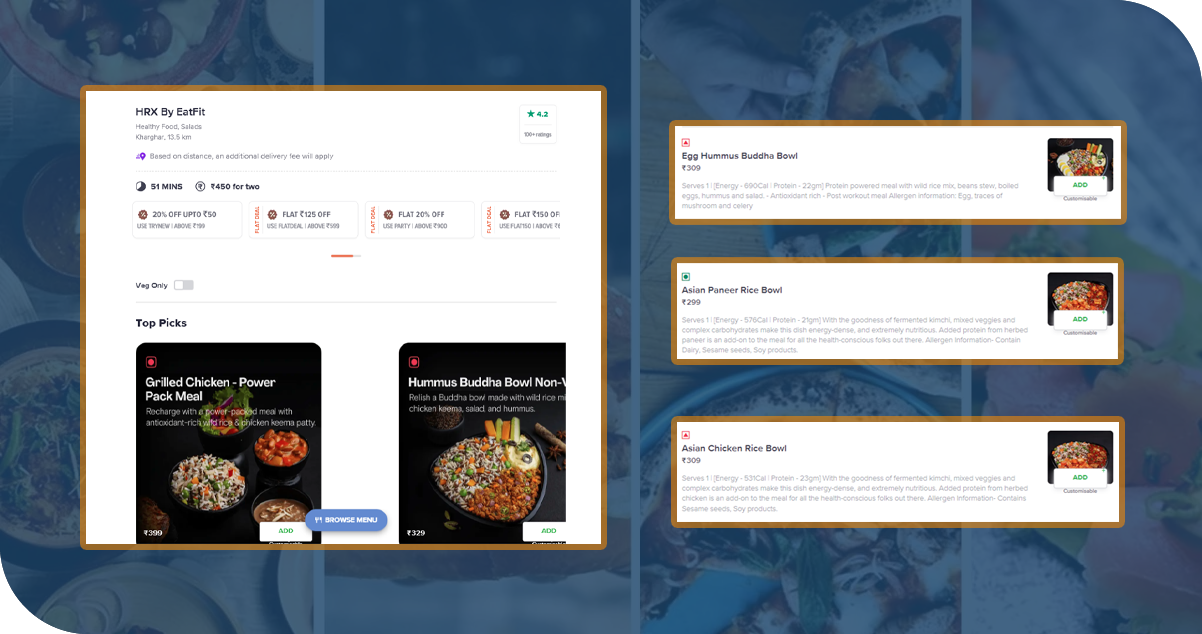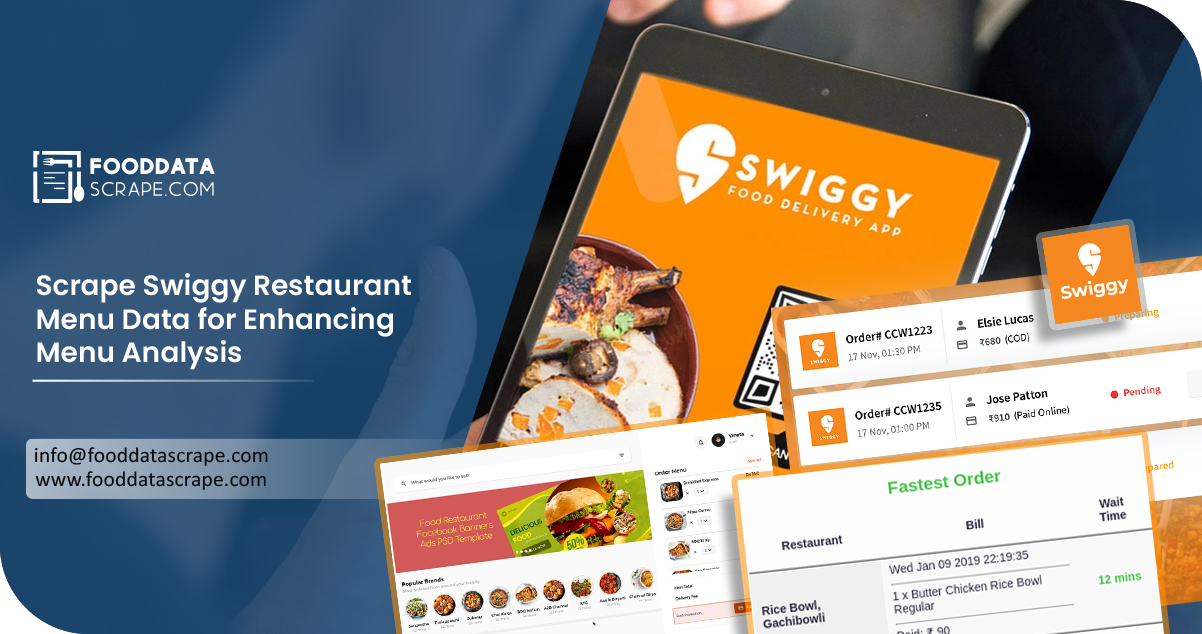The Client
Our client, a key player in the thriving food and restaurant industry, recognized the transformative potential of data-driven insights to bolster their business strategies. With a reputation for culinary excellence and a commitment to staying ahead in a competitive market, they sought to harness the power of technology to their advantage. Their objective was to scrape Swiggy restaurant menu data, a wealth of information that could give them a deep understanding of consumer preferences, market trends, and competitor dynamics.
Key Challenges

Swiggy's website employs dynamic elements, including JavaScript-driven content loading and varying page structures. It made it complex to locate and scrape Swiggy restaurant menu data consistently.
Swiggy employs anti-scraping mechanisms to protect its data. We must implement IP rotation, user-agent spoofing, and intelligent request throttling to avoid detection and maintain a reliable scraping process.
With many restaurants and menu items listed on Swiggy, pagination and managing a high volume of data posed challenges. Navigating through multiple pages and organizing the data required careful handling.
Key Solutions
Dynamic Content Handling: Given the dynamic nature of Swiggy's website, we employed a combination of tools like Selenium to interact with JavaScript-driven elements. It ensured that all content while food delivery data scraping, including dynamically loaded menus, was accurately captured.
Anti-Scraping Mitigation: We utilized IP and user-agent rotation to bypass anti-scraping measures. It allowed us to vary our digital footprint and avoid triggering detection mechanisms while maintaining a consistent scraping process.
Advanced Parsing Techniques: We employed advanced parsing techniques to navigate paginated data efficiently. It enabled us to seamlessly capture data from multiple pages, ensuring a comprehensive dataset.
Throttling and Delays: To prevent overloading Swiggy's servers and minimize the risk of detection, we incorporated intelligent request throttling and randomized delays between requests. It simulated human browsing behavior, reducing the likelihood of being blocked.
Data Structuring: We structured the scraped data into a consistent format, such as JSON or CSV. It facilitated easy analysis, storage, and integration with our client's systems for further processing.
Regular Maintenance: Swiggy's website structure and anti-scraping measures can change. To adapt to these changes, we implemented regular monitoring and updates to our scraping scripts to ensure continuous and accurate data extraction.
Methodologies Used

- URL Identification: Our Swiggy restaurant data scraping services identified the specific URLs of the restaurant pages on Swiggy's platform that contained the menu data we aimed to scrape.
- HTTP Requests: Utilizing programming languages like Python and leveraging libraries such as Requests, we initiated HTTP GET requests to web scrape restaurant data and fetch the HTML content of the identified restaurant URLs.
- Dynamic Content Handling: Swiggy menus often incorporate dynamically loaded content using JavaScript. We employed Selenium, a browser automation tool, to simulate user interactions and access the complete menu details, ensuring no missing data.
- Parsing HTML: With the HTML content in hand, we employed BeautifulSoup, a Python library, to parse the content and extract relevant data elements. We targeted menu items, prices, descriptions, and other essential information using CSS selectors and XPath expressions.
- Pagination Management: As Swiggy's restaurant listings span multiple pages, we implemented an organized pagination approach. It allowed us to navigate through pages and consistently scrape data from each systematically.
- Data Cleansing and Structuring: Extracted data might contain inconsistencies or unwanted characters. We conducted data cleansing processes to ensure accuracy and structured the information into a cohesive format, typically JSON or CSV.
- Anti-Scraping Measures: We integrated strategies such as rotating user agents and introducing randomized delays between requests to evade potential anti-scraping mechanisms. These measures aimed to mimic human browsing behavior and minimize the risk of detection.
- Data Storage: We stored the structured data in organized formats to facilitate easy access and analysis. Formats like JSON or CSV enabled seamless integration with other tools and systems for further analysis and utilization.
Advantages of Collecting Data Using Food Data Scrape

Expertise and Experience: Food data scraping companies extract relevant data from food-related sources. Their experience in web scraping techniques ensures accurate and comprehensive data collection, saving businesses time and resources.
Comprehensive Data: Food data scraping companies have the tools and techniques to gather a wide range of data, including menu items, prices, reviews, and ratings. This comprehensive data enables businesses to gain holistic insights into the market.
Customization: These companies can tailor their scraping processes to match specific business needs. Whether it's focusing on particular cuisines, geographical locations, or types of establishments, customization ensures relevant data collection.
Data Accuracy: Food data scraping companies employ quality assurance measures to ensure the accuracy and reliability of the collected data. Clean and precise data support informed decision-making and accurate analysis.
Timeliness: These companies can provide real-time or frequent updates to the collected data, enabling businesses to stay current with rapidly changing market trends and consumer preferences.
Legal and Ethical Compliance: Established food data scraping companies are well-versed in navigating legal and ethical considerations related to web scraping. They ensure compliance with terms of use, privacy policies, and data protection regulations.
Competitive Edge: Access to well-structured and analyzed data gives businesses a competitive advantage. Insights from scraped data allow them to make informed decisions that align with market demands and consumer expectations.
Reduced Workload: Outsourcing data scraping to experts allows businesses to focus on core activities. They can leverage the scraped data without investing significant time and effort into the scraping process itself.
Strategic Decision-Making: The insights from scraped data enable businesses to make strategic decisions about menu planning, pricing strategies, customer engagement, and expansion opportunities.
Data Integration: Many food data scraping companies offer structured data formats easily integrated into existing databases, analytics tools, or business systems. It streamlines the process of utilizing the collected data.
Final Outcome: We successfully scraped Swiggy's extensive restaurant menu data, catering to our client's specific needs and objectives. Through meticulous web scraping techniques and tailored approaches, we acquired a comprehensive dataset that encompasses menu items, prices, and additional relevant information. This data helped our clients with actionable insights to refine their offerings, optimize pricing strategies, and enhance customer experiences, driving their success in the competitive food industry landscape.
























































































